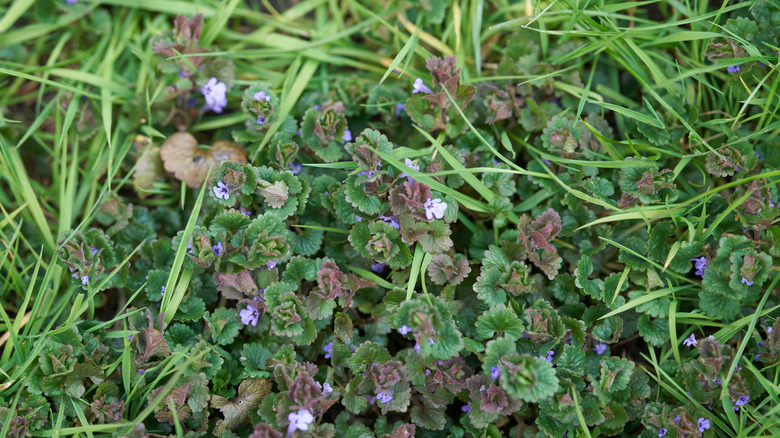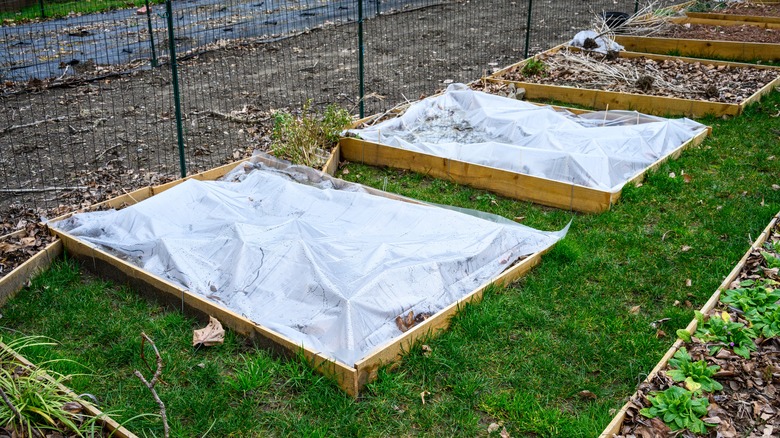The All-Natural Way To Get Rid Of Ground Ivy And Keep It From Coming Back
Known for commandeering lawns and strangling garden greenery, ground ivy (Glechoma hederacea) can quickly become a nuisance in your yard. In fact, it's reported as invasive in several states. This flowering foe has round leaves with scalloped edges and purple, tube-shaped blooms that appear in the early spring. Also called creeping Charlie, gill-on-the-ground, and alehoof, it's tough to eradicate because it produces numerous roots through nodes, forming mats of runners that suffocate grass.
Even if you remove every last node, a nearly impossible task, this perennial from the mint family can spread through seeds. Herbicides are popular for ridding yards of creeping Charlie, but they're not for everyone. If you're concerned about their potential to harm the environment, your kids, or the family pet, chemical-free options are worth considering. One of the best, and easiest, method is soil solarization, a safe and natural alternative to chemicals that uses clear plastic sheeting to kill existing weeds and keep seeds and nodes from forming new plants.
Banish ground ivy with clear plastic and hot sunlight
When sunlight permeates tight-fitting plastic, the soil becomes too hot for ground ivy and its seeds to survive. The more sunlight the weed receives, the faster it's likely to wither. In other words, solarization works best in sunny areas and during the sunniest times of year, typically spring and summer. Under ideal conditions, it can kill weeds in four to six weeks. For best results, your plastic should be transparent, UV stabilized, and free of holes.
The cool, shady spots ground ivy loves can be solarized, but the process tends to be slower. Wait at least five months for solarization to work in low-sunlight conditions. In cases like these, remove the plastic sheeting in the fall, when the weeds look dead and the soil is between 35 and 55 degrees Fahrenheit. This is the best time for dormant lawn seeding, which can help keep ground ivy at bay if it tries to reestablish itself.
Solarization is less likely to succeed when heat escapes from beneath the plastic. Placing bricks, rocks, or soil on the sheeting's edges can help. Also note the ground's slope. Solarization works best on flat surfaces, so discard dirt clods and other debris before covering the ground ivy with plastic. If the area you're treating is hilly, consider other natural weed-control strategies, which include smothering the plants with cardboard, removing the weed and roots by hand, and attacking its mats of runners with a sod-cutter.

